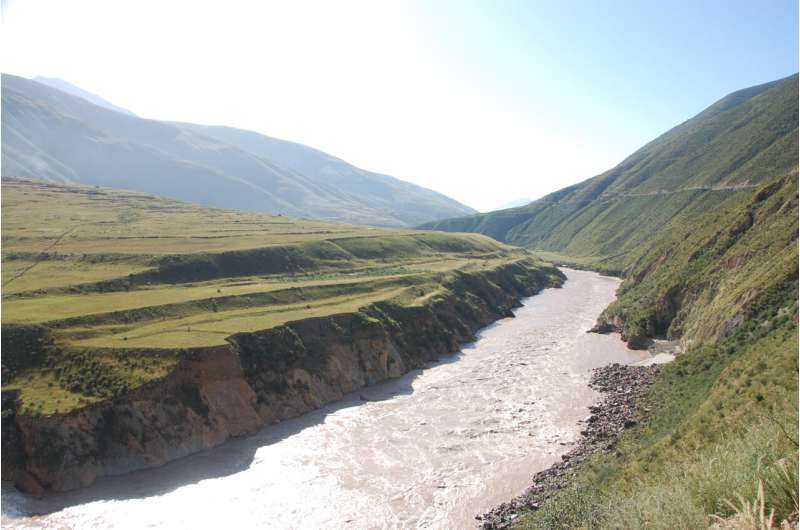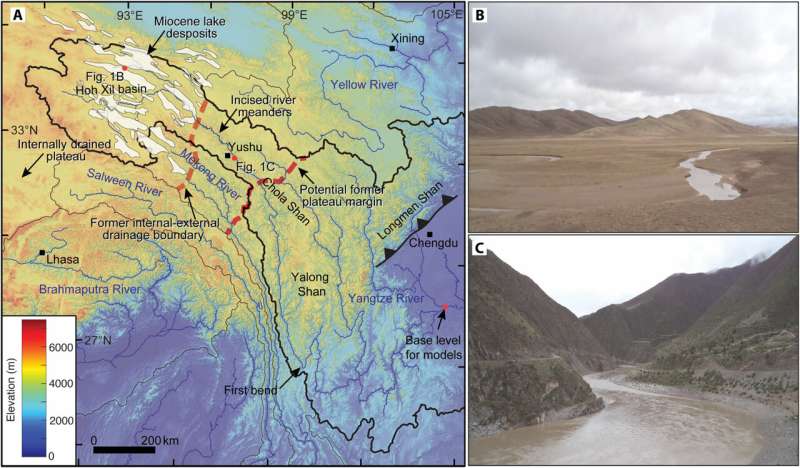This article has been reviewed according to Science X's editorial process and policies. Editors have highlighted the following attributes while ensuring the content's credibility:
fact-checked
peer-reviewed publication
trusted source
proofread
Research presents new development model for the world's third-longest river

A new research paper published in Science Advances reveals how changes in the size of the Yangtze River watershed may have led to the carving of deep canyons.
In this study, UNC-Chapel Hill professor Eric Kirby and his co-authors explore the impact of drainage basin expansion on the growth of the Yangtze River.
"This study presents a new model for when and how the Yangtze River was born," said Kirby, "The Yangtze is one of the world's great rivers, rising on the Tibetan Plateau at altitudes over 17,000 feet and descending through some of the deepest canyons on the planet toward the East China Sea. The timing of when these canyons were carved is commonly attributed to the uplift of the Tibetan Plateau, but whether the rivers existed in their present-day configuration has been uncertain."
Landscape evolution simulations demonstrated that expansion of the Yangtze watershed since the Late Miocene could be responsible for 1 to 2 kilometers of fluvial incision. In addition, increased erosive power associated with capture and basin integration drove accelerated incision during the Late Miocene.
"One key observation is that ancient lakes were present on the top of the plateau. Our work shows that the effect of capturing these lake basins can explain much of the timing of river incision and the depth of those canyons. Essentially, the Yangtze used to be a shorter, smaller river," Kirby adds.
The study also implies that eastern Tibet was elevated prior to approximately 15 million years ago and the timing of fluvial incision may be out of phase with the growth of plateau topography.

More information: Alexander Rohrmann et al, Accelerated Miocene incision along the Yangtze River driven by headward drainage basin expansion, Science Advances (2023). DOI: 10.1126/sciadv.adh1636
Journal information: Science Advances
Provided by University of North Carolina at Chapel Hill





















